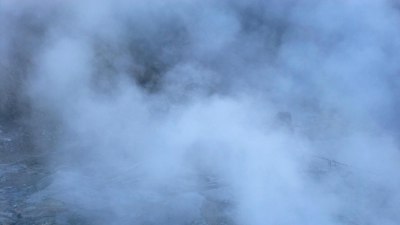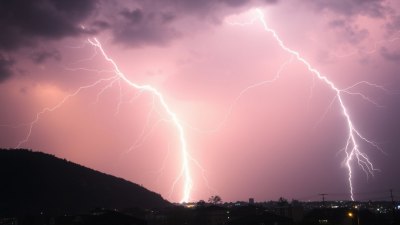How Weather Turns Your Casual Hike Into a Quest for Survival
Discover how changing weather can transform a simple hike into a life-threatening survival challenge.

Image by marymarkevich on Freepik
When setting out on a casual hike, many people envision an enjoyable trek through nature, admiring scenic views and enjoying the fresh air. However, weather conditions can change rapidly, transforming a simple outdoor experience into a high-stakes survival quest. Understanding the profound impact of weather on hiking conditions is crucial for ensuring safety while enjoying nature.
The most benign hiking days can quickly morph into perilous situations due to sudden weather changes. Elements such as rain, snow, wind, and temperature shifts can pose significant risks to even the most seasoned hikers. Therefore, it’s essential to be informed about how these weather patterns can affect hiking safety and preparation.
Understanding Weather Patterns
Weather patterns vary significantly based on geographical location and time of year. Mountainous regions, for example, can exhibit drastic changes in weather within short periods. A sunny morning can lead to an afternoon hailstorm, particularly in the summer months. Knowing the climate of your hiking destination helps in predicting potential weather challenges.
Before embarking on a hike, check reliable weather forecasts that cover the specific area you plan to explore. Mobile apps and websites can provide real-time updates about weather trends that might affect your route. Moreover, understanding terms like 'cold fronts' and 'warm fronts' can provide insight into the stability of upcoming weather patterns, helping hikers prepare accordingly.
Rain: A Common Hiker's Challenge
Rain is one of the most frequent weather adversities hikers face. While light rain may seem manageable, it can obscure trails, create slippery paths, and lead to dangerous flash floods in low-lying areas. It’s vital to recognize the signs of an impending storm and the impact of rain on the terrain.
Heavy rains can alter river levels and cause landslides, especially in mountainous regions where soil erosion is prevalent. Hikers must be cautious when crossing streams, as increased water flow can make crossings treacherous. Carrying waterproof gear, such as a reliable rain jacket and water-resistant footwear, can make hikes more enjoyable, even in wet conditions.
Snow and Ice: The Hidden Dangers
Winter hikers often face snow and ice, which can create a beautiful landscape but also introduce danger. Deep snow can obscure trails, making navigation difficult, while icy paths heighten the risk of falls and injuries. If the weather report predicts snowfall, it’s important to reassess the difficulty of the planned hike.
Wearing appropriate winter gear is critical during snowy hikes. Insulated boots, gaiters, and layered clothing can help maintain warmth and mobility. In more extreme winter conditions, it might be necessary to bring specialized equipment such as crampons or ice axes, particularly for steep or icy terrain. Learning how to use this equipment effectively can drastically improve safety during winter hikes.
Wind: The Unforeseen Hazard
Strong winds can drastically affect hiking conditions, especially on exposed ridges and mountain tops where gusts can exceed safe limits. High winds can disorient hikers and make it difficult to maintain balance, increasing the likelihood of falls near cliffs or steep edges. Moreover, winds can lead to rapid temperature drops, which can accelerate the onset of hypothermia.
Checking for wind advisories as part of your weather review is advisable. If hikes are planned in windy conditions, wear wind-resistant clothing, and always consider postponing your adventure if winds are expected to be dangerously high. Additionally, avoid hiking in wide-open spaces during storms since fallen branches and debris can pose additional threats.
Temperature Changes: The Silent Threat
Temperature variation is a common climate challenge faced by hikers, particularly those trekking in mountainous areas. A sunny day at the trailhead may feel warm; however, as one ascends, temperatures can plummet dramatically. Hypothermia remains a significant risk in these scenarios.
Bringing layers of clothing is essential to adapt to changing temperatures efficiently. Start with moisture-wicking base layers, add insulating layers, and finish with a waterproof outer layer to protect against the elements. Knowing when to adjust layers is crucial for staying comfortable during a hike and preventing hypothermia or overheating.
Becoming Weather-Wise: Preparation is Key
One of the most effective defenses against unpredictable weather changes is preparation. Hikers should check weather reports and have a good understanding of when adverse conditions are likely to hit. Familiarize yourself with the signs of changing weather, such as sudden winds, darkening skies, or temperature drops. Having an emergency plan is essential; know your escape routes and how to contact help if necessary.
Additionally, equipping yourself with survival gear like a first aid kit, flare, whistle, and a compass can enhance your readiness for unexpected weather conditions. Plus, having extra food and water supplies ensures you can survive longer if you need to wait for conditions to improve.
Understanding Local Microclimates
Many hiking destinations display unique microclimates influenced by their geography. Mountain ranges, forests, and bodies of water create conditions that differ significantly from surrounding areas. Learning about these microclimates helps hikers better prepare and react during their adventures.
For example, coastal restaurants may enjoy mild conditions during summer, whereas nearby mountains experience cooler weather and more precipitation. Familiarizing yourself with local weather patterns, historical climate data, and how microclimates function can greatly improve your hiking experience.
Acclimatization: Adapting to High Altitudes
Hiking in elevated areas introduces challenges beyond just weather conditions. Travelers venturing into high altitudes must acclimatize to avoid altitude sickness. Symptoms can escalate due to sudden temperature drops, so understanding acclimatization principles is crucial.
Start training in areas that mimic the altitudinal impact of your destination, and gradually increase your elevation during the hike. Staying hydrated is vital, as dehydration exacerbates altitude-related issues. Planning rest stops and allowing time for your body to acclimatize will contribute toward a safer climbing experience.
Safe Hiking Practices
In addition to the weather-centric preparations, employing general safe hiking practices enhances overall safety. Traveling with a buddy or group offers the benefit of additional support in case of emergencies. Hikers can discuss their route beforehand, keeping everyone informed about the planned adventure.
Always inform someone not on the hike about your plans, including the route and expected return time. That way, if conditions become unfavorable and you don’t return on time, someone can alert authorities for help. Additionally, practicing Leave No Trace principles ensures that your hiking experience has minimal environmental impact.
Hiking Back: The Call of Caution
As the saying goes, “better safe than sorry,” and this rings particularly true when hiking. If weather conditions begin to change unexpectedly or worsen, trust yourself and prioritize safety over adventure. Retreating to safety may sometimes be the hard choice, but it can prevent potential disasters. Keeping an eye on the sky and being aware of your surroundings will guide your decisions about whether to continue exploring or to head back.
In summary, understanding how weather affects hiking is essential to transform a casual hike into a well-prepared journey. Evaluating conditions, respecting nature, practicing safety, and preparing for emergencies equips hikers with tools to enhance both their confidence and survival strategies. Whatever the elements throw your way, being prepared ultimately leads to a more enjoyable and safe hiking experience.











